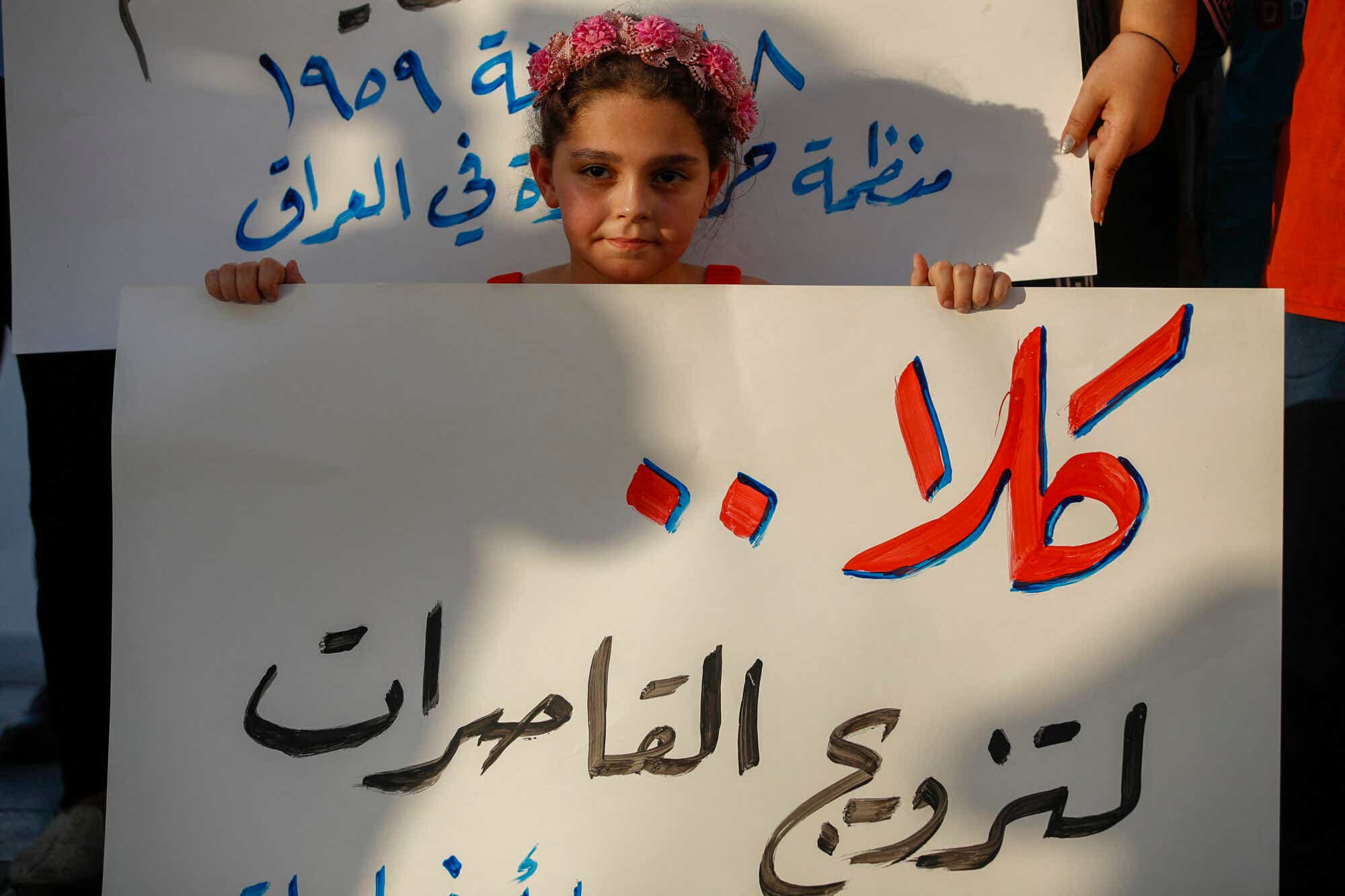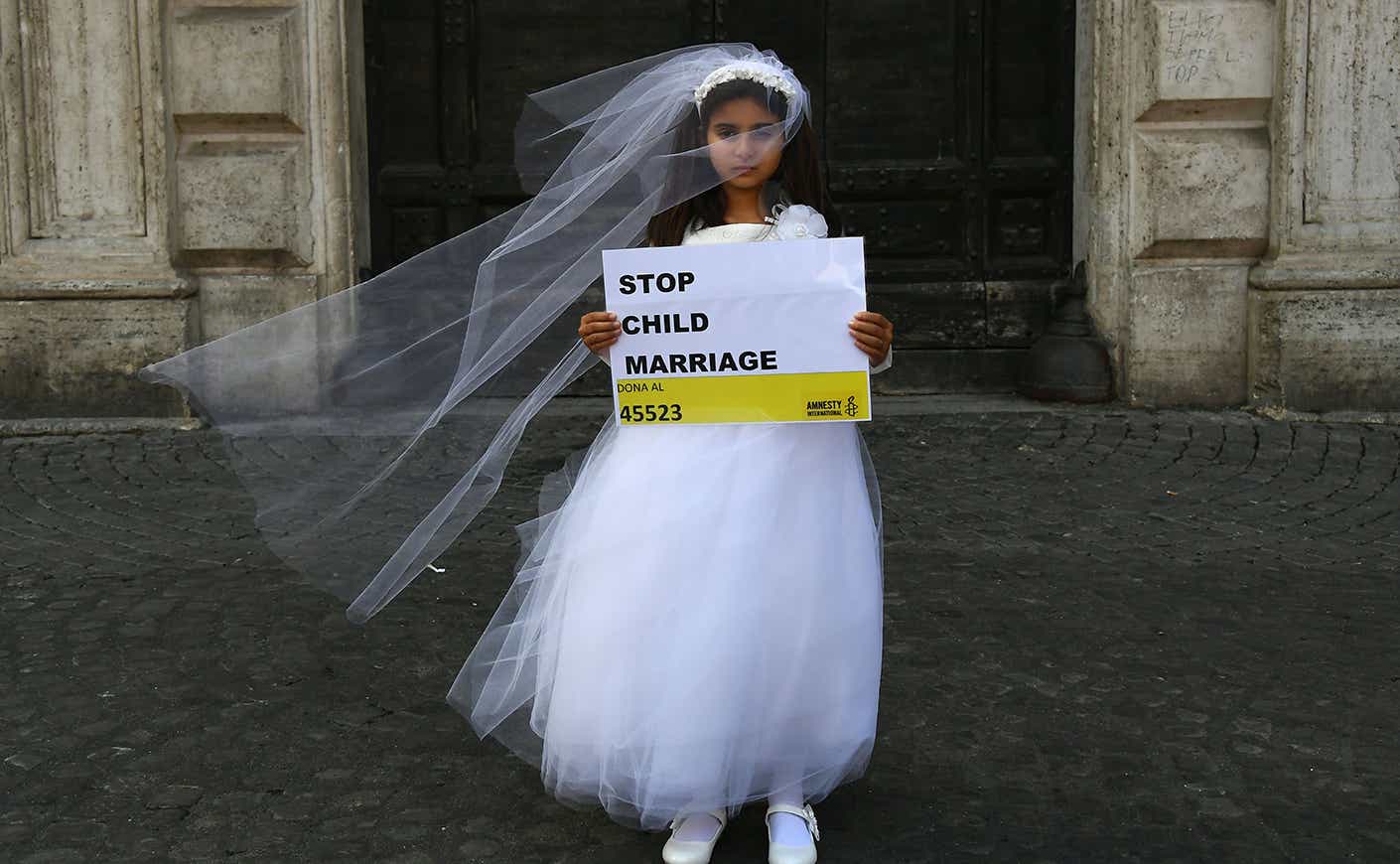Child marriage may seem like a relic of a horrific bygone era, but for some girls worldwide, it’s a disturbing reality. This extreme injustice is a current threat to today’s women and girls — and two recent pieces of news highlight just how dangerous it is. First, Iraq is considering a law change that would allow girls as young as nine years old to become brides, an egregious attempt to further entrench the violation of children’s rights. On the heels of that news, a new report from UN Women tells us that at the current rate, the harmful practice of child marriage will not end until 2092.
This year alone, 12 million girls will become brides, robbing them of their childhoods and future opportunities. The World Bank and the International Center for Research on Women tells us that this practice costs the global economy trillions of dollars, with millions of girls annually unable to enter the workforce and contribute to their local economies. As leaders of organizations whose mission is to end the child marriage crisis, we’ve seen firsthand how this practice impacts not only a girl and her family, but the community as a whole.
Ongoing efforts to end child marriage have had positive results, including declines in the rate of this practice globally, particularly among wealthier households. But change isn’t happening fast enough. If progress continues at the current pace, a staggering number of girls’ futures will continue to be compromised. At current rates, a girl becomes a bride every three seconds.
The urgency of the crisis
Child marriage is the most normalized manifestation of gender inequality and a form of violence against women and girls.
Often, the day a girl becomes a bride is the day she’s forced to leave school, and that lack of an education limits her future earning potential. She often becomes pregnant before her body is ready; childbirth at a young age carries with it lifelong health consequences. She’s also more likely to experience violence at home. And on, and on.
Decades of studies show us that when girls are able to make their own decisions about their futures, the outcomes for their lives and the lives of their children — if they choose to have them — are greatly improved.
Increasing numbers of nations are committing to ending child marriage, because they know their communities will be stronger if the age of marriage is delayed. Yet the practice continues to happen across countries, cultures, and religions. With each day that passes, more than 28,000 girls’ futures are irreparably altered when they become a bride.

How we can end child marriage
Ending child marriage is possible: In communities around the world, a range of interventions implemented by community-based organizations are making a difference in girls’ lives. These local leaders are sensitizing communities on the negative impact of the practice, and partnering with key decision-makers to influence households. They also inform girls about their rights, supporting them to stay in school, creating safe spaces to gather and support one another, and ensuring that they know the harms of child marriage and what to do if their futures are at risk. These frontline partners also strive to provide girls and their families with an alternative to marriage, whether through increased access to education, information on sexual reproductive health and rights, and/or income-generating opportunities.
Take Manisha, a young girl who we met in Nepal. Manisha was just 14 years old when her parents told her it was time to get married, in keeping with local traditions. This meant that she’d have to leave school and end her dreams of completing her education.
Manisha’s story, however, offers hope: When her parents shared their plans for her to marry, she was already enrolled in a girls’ club that informs girls about their rights and how to negotiate their futures. Because of the program, she knew that a marriage at such a young age was a violation of the law. “I knew my rights,” she said. “It wasn’t easy, but I told my parents, ‘No, this is illegal. I want to stay in school.'” And she did.
While we’re heartened to see increasing numbers of girls like Manisha advocate for themselves and their peers when threatened with child marriage, this isn’t the most sustainable solution to this crisis. In countries where social norms are entrenched and governments have little capacity, will, or authority to implement the law, we must address the root causes of child marriage that keep girls limited in what they can achieve.
How to empower and fund local nonprofits
Manisha was aware of her rights thanks to the work of LIFE Nepal, a local organization that runs girls’ clubs that provide safe spaces for them to gather, learn, and support one another. The organizations we lead — the Girls First Fund and VOW for Girls — are investing in the work of LIFE Nepal and more than 200 such organizations across 15 countries.
In communities where girls’ futures are most at risk around the globe, organizations like LIFE Nepal are well-positioned to reach girls and their communities and ensure the girls can have a future that doesn’t include forced marriage. However, these organizations often lack access to the type of quality funding that enables them to foster long-term change.
That change can best happen through community-based organizations like LIFE Nepal, which can not only reach girls, but also disrupt patriarchal norms that perpetuate child marriage.
A call to action
With 12 million girls’ futures at risk this year, more funding is desperately needed to invest in local organizations who disrupt the causes of child marriage in their communities.
In whatever way you can, we invite you to be a part of this work. That may mean making ending child marriage part of your philanthropy, or using your own moments of joy and celebration to support the joy and choices of girls worldwide by asking for donations in addition to, or instead of, gifts. In the communities where we’re investing in local organizations, relatively small amounts of money make a huge difference in reaching, educating, and supporting girls to navigate futures free of child marriage.
We all need choice in our lives, so let’s use our resources to give millions of girls more choice — and an opportunity for a more expansive future.
Clay Dunn is the CEO of VOW for Girls, a U.S.-based 501 c3 that mobilizes individuals, brands, and corporations to raise funds and awareness to end the global child marriage crisis and support girls’ choices for their futures. Funds raised by VOW for Girls are invested in the work of local community leaders in collaboration with VOW’s sister organization, the Girls First Fund.
Fanta Toure is the Director of the Girls First Fund, a donor collaborative supported by leading philanthropic organizations and individual philanthropists who have come together to champion community-led efforts so that all girls can live free from child marriage and create their own future.









